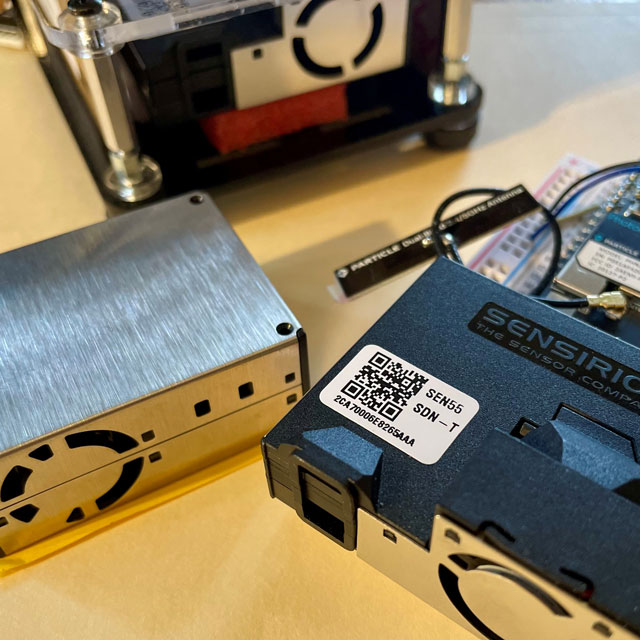Metal Oxide (MOX) sensors have become a popular choice for detecting volatile organic compounds (VOCs) in indoor environments. They’re compact, low-cost, and widely integrated into consumer-grade air quality monitors. But our experience while using MOX sensors offers is that they come with a set of caveats that we need to understand before relying on them for precise VOC analysis.
What MOX Sensors Actually Measure
MOX sensors detect VOCs by measuring changes in electrical resistance caused by chemical reactions on a heated metal oxide surface. When VOC molecules interact with the sensor’s surface, they alter its conductivity — which is then translated into a signal representing total VOCs (TVOC).
But here’s the catch: MOX sensors don’t identify individual VOCs. Instead, they provide a generalized TVOC value, which is often calibrated against a reference gas like ethanol. This means the sensor’s response is biased toward the calibration compound and may not reflect the true toxicity or concentration of other VOCs in the air.
Key Limitations to Consider
1. Non-Specificity
MOX sensors can’t differentiate between VOC types. Whether the air contains benign ethanol or harmful formaldehyde, the sensor may report similar TVOC levels. This lack of selectivity can lead to misleading interpretations of air quality.
2. Calibration Dependency
The accuracy of MOX sensors hinges on calibration — typically done with a single VOC like ethanol. However, VOC mixtures in real-world environments vary widely. A sensor calibrated for ethanol may underreport or overreport concentrations of other compounds like toluene or benzene.
3. Environmental Sensitivity
Temperature and humidity fluctuations can significantly affect sensor readings. MOX sensors are known to drift under changing environmental conditions, which complicates long-term monitoring and data reliability.
4. Aging and Drift
Over time, MOX sensors can degrade due to repeated exposure to reactive gases and thermal cycling. This leads to signal drift and reduced sensitivity, requiring frequent recalibration or replacement.
5. Limited Quantification
Unlike gas chromatography–mass spectrometry (GC-MS), MOX sensors don’t provide quantitative data on individual VOC concentrations. They perform best when used for trend detection rather than precise measurement.
When Are MOX Sensors Useful?
Despite their limitations, MOX sensors are valuable for:
- Trend monitoring in homes, offices, workspaces, and indoor spaces where people gather
- Early detection of VOC spikes from cleaning products or combustion
- Long-term monitoring of spaces to determine building rhythms
MOX sensors offer a glimpse into indoor air quality — but not the full picture. Understanding their caveats helps us make informed decisions about the results they provide and the time series data generated. That time series data becomes actionable as building rhythms are discovered and an engineering analysis identifies troubling patterns.


Leave a Reply
You must be logged in to post a comment.